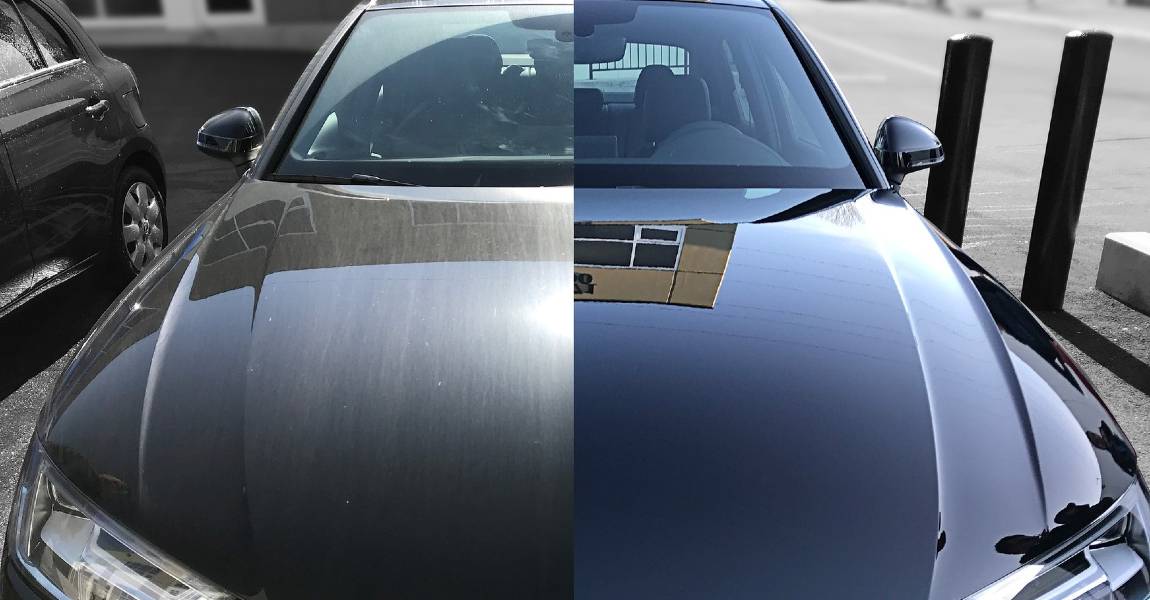Choose expert-installed paint protection film for a invisible layer of protection.
Choose expert-installed paint protection film for a invisible layer of protection.
Blog Article
A Comprehensive Overview to the Kinds of Ceramic Layer on the marketplace
Ceramic layers have actually emerged as a crucial service across different industries because of their unique homes and applications. From silica-based solutions understood for their robustness to hybrid options that combine multiple benefits, the choices available can be frustrating. Comprehending the subtleties of each kind, including their particular advantages and suitable use instances, is essential for making notified choices. As we explore the unique attributes and applications of these coatings, the effects for performance and durability come to be increasingly evident, elevating questions regarding which type could ideal suit your needs.
Understanding Ceramic Coatings
Ceramic coatings are sophisticated safety solutions that have acquired appeal in various industries, specifically in automotive and aerospace applications. These coverings consist of a liquid polymer that, when cured, forms a resilient, hydrophobic layer externally of the substrate. This layer provides boosted resistance to ecological impurities, UV radiation, and chemical direct exposure, thereby extending the life and aesthetic appeal of the underlying material.
The fundamental element of ceramic finishings is silica, which adds to their firmness and toughness. The application process commonly entails surface prep work, application of the finish, and treating, which can be achieved with heat or UV light. As soon as treated, ceramic coatings show phenomenal bonding residential or commercial properties, permitting them to adhere highly to a range of surfaces, including steels, plastics, and glass.
In addition to their protective attributes, ceramic finishings also supply simplicity of maintenance. Their hydrophobic nature minimizes the adherence of dust and crud, making cleansing less complex and less frequent. On the whole, the fostering of ceramic coatings stands for a substantial development in surface defense modern technology, providing both practical and aesthetic advantages across numerous industries.
Sorts Of Ceramic Coatings
Various kinds of ceramic coatings are offered, each made to meet certain efficiency requirements and applications - scratch repair sarasota. One of the most common types consist of:
Silica-based Coatings: These layers mainly are composed of silicon dioxide and are known for their durability and chemical resistance. They are commonly made use of in automotive and industrial applications.
Titanium Dioxide Coatings: Renowned for their photocatalytic homes, titanium dioxide layers are often applied in atmospheres where self-cleaning and antifungal homes are preferable, such as in building materials and automotive coatings.
Zirconia Coatings: Identified by their high-temperature security and thermal resistance, zirconia layers are made use of in applications such as generator engines and high-performance vehicle elements.
Alumina Coatings: Displaying excellent solidity and thermal security, alumina finishings are frequently used in wear-resistant applications, including reducing tools and industrial equipment. - Car Detailing
Crossbreed Coatings: Integrating the residential properties of numerous materials, hybrid finishes use boosted performance qualities, making them suitable for one-of-a-kind and demanding applications.
Each sort of ceramic layer offers distinct objectives, allowing customers to choose one of the most proper service based upon particular ecological conditions and efficiency requirements.
Benefits of Ceramic Coatings
Coatings play an essential role in enhancing the efficiency and durability of surface areas across numerous markets. Ceramic coatings, in certain, offer many benefits that make them progressively popular among makers and consumers alike. Among the main important link benefits is their exceptional durability. These layers are immune to scratches, chemicals, and UV rays, ensuring that the underlying surface area stays protected over time.
Along with longevity, ceramic coatings give superb hydrophobic homes, enabling for simple cleansing and upkeep. This water-repellent nature decreases the adherence of dust, gunk, and other impurities, which can prolong the aesthetic allure and capability of the surface. In addition, ceramic finishes can considerably enhance thermal resistance, making them excellent for applications that sustain high temperatures.

Application Refine
When applying ceramic coverings, a meticulous strategy is important to achieve optimal outcomes. The application procedure typically begins with comprehensive surface prep work. This involves cleaning, decontaminating, and polishing the surface to remove all pollutants, consisting of dust, grease, and prior waxes or sealers. A clean surface area ensures appropriate adhesion of the finishing.
Once the surface area is prepped, the following action is to use the ceramic finishing. The coating needs to be used in thin layers, as thicker applications can lead to irregular surfaces.
After application, the coating calls for a certain treating time, typically varying from a few hours to a complete day, depending upon the item. During this time around, it is vital to avoid direct exposure to moisture or contaminants. A mild buffing might be necessary after curing to improve the gloss and eliminate any kind of high places. Adhering to these actions vigilantly will make best use of the efficiency and durability of the ceramic layer, offering a sturdy protective layer for the surface.
Maintenance and Long Life
To ensure the long life and efficiency of a ceramic finishing, normal maintenance is crucial. Going Here Ceramic coverings, recognized for their resilience and safety qualities, need details care routines to optimize their lifespan and efficiency.
In addition to regular washing, regular inspections are vital. Look for indications of wear or damages, such as hydrophobic residential properties diminishing or surface flaws. If essential, a light gloss may be put on invigorate the layer without stripping it away.
Moreover, the application of a booster spray can enhance the finish's hydrophobic effects and recover its gloss. This is especially helpful for finishes that have actually been in usage for a prolonged period. Inevitably, by sticking to these upkeep methods, one can dramatically prolong the life of a ceramic coating, making sure that it remains to offer optimum protection versus environmental aspects and preserve the visual appeal of the vehicle.
Verdict

Report this page